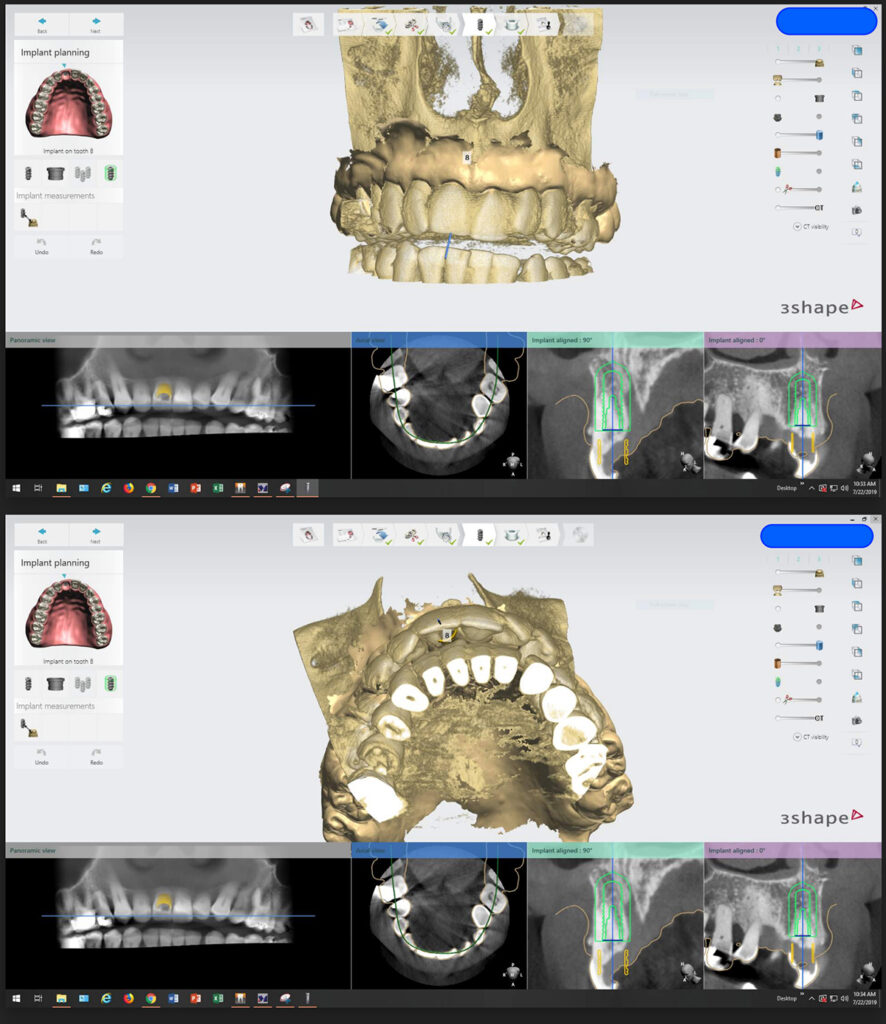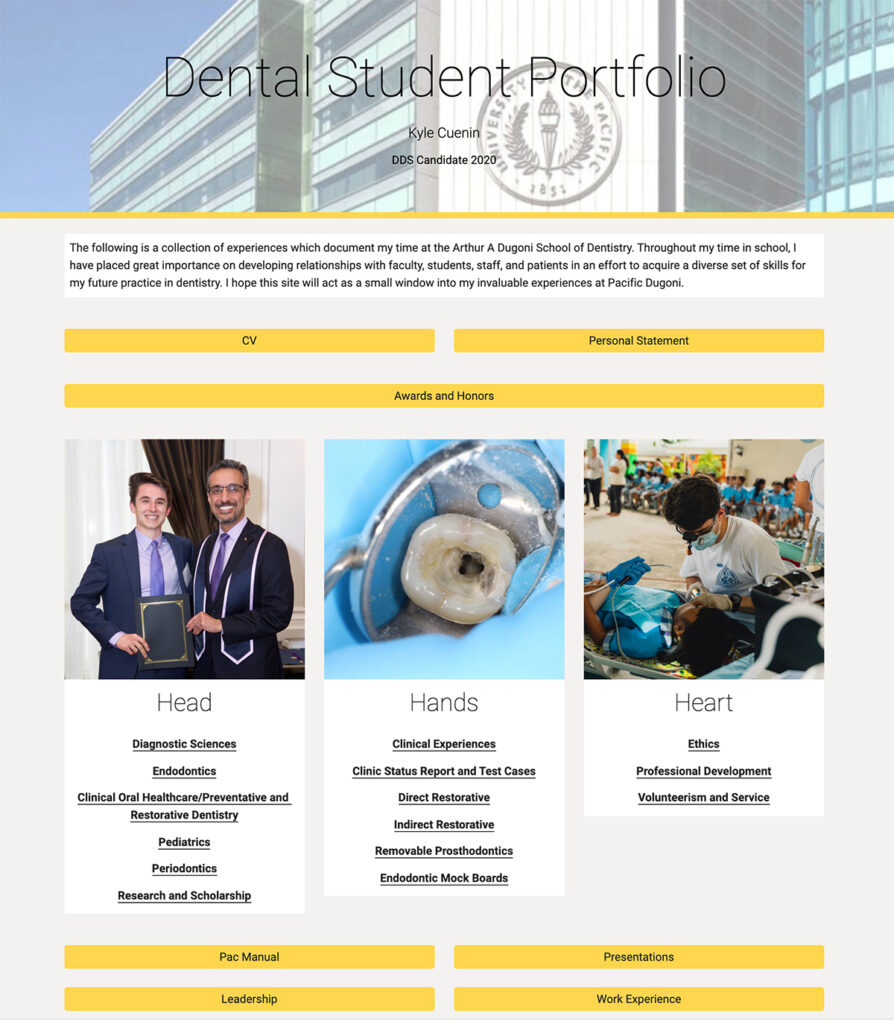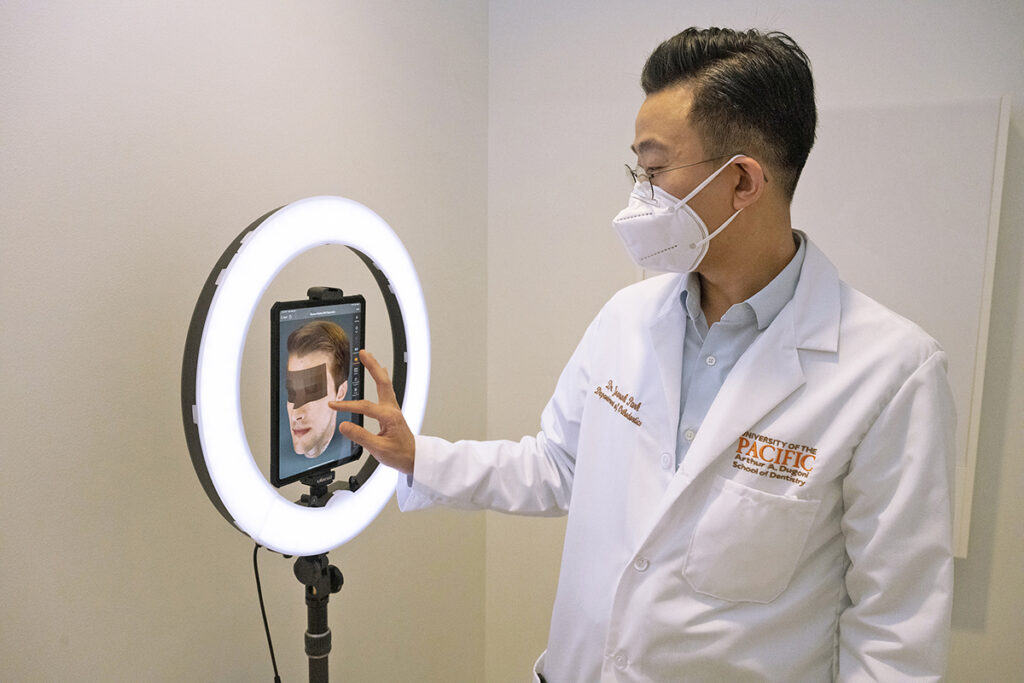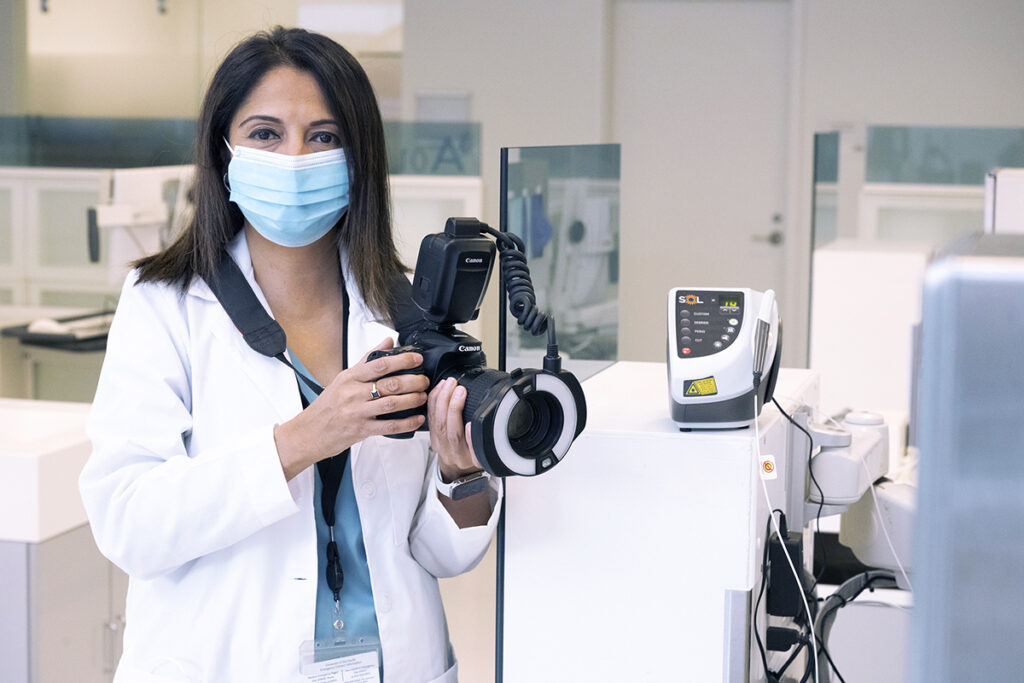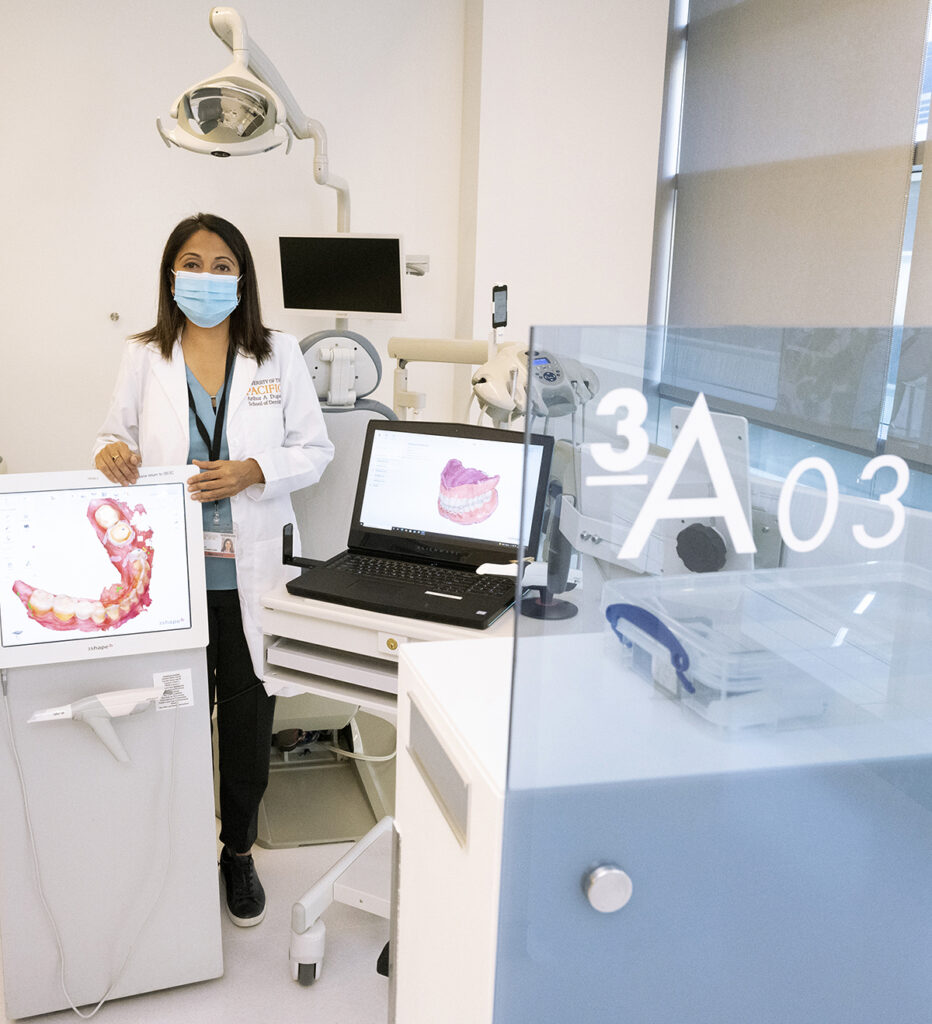
Technology in the Curriculum
By Jennifer Langham
All dental professionals—even the youngest graduates of the Arthur A. Dugoni School of Dentistry—can reflect on how dentistry has changed within their lifetimes because of evolving technology. The way that dental education is delivered has been transformed by technology too, especially during the recent pandemic.
And Dugoni School of Dentistry faculty have not only responded to these changes but have been leaders in the use of technology in both the curriculum and the clinic. Dr. Cindy Lyon ’86, associate dean for oral health education, notes that despite the disruption to dental training in 2020, a post-pandemic survey found that more than 80% of both students and faculty believed the school should continue to use some form of distance learning. “We were able to quickly deliver quality distance and hybrid instruction because we already had growing momentum that valued educational and clinical technology and innovation,” she says.
Here are snapshots of some of the dental school faculty in fall 2021 who are shaping students’ experiences—and dental education itself— through technology.
Educating the Educators
Dr. Sinky Zheng
Associate Professor, Department of Diagnostic Sciences; Senior Instructional Designer and Faculty Developer
As an associate professor of learning sciences, Dr. Sinky Zheng was instrumental during the pandemic in supporting faculty as they created online learning materials. But Zheng was active long before 2020 as she helped faculty members and administrators evaluate and implement technology for teaching and learning. In addition, her work has helped faculty add tools that engage students, promote student collaboration and assess learning.
She notes that students will continue using some of these pedagogical tools after they graduate. “When the students leave school, many will want to practice independently. For example, our dental students create a graduation digital portfolio website where they showcase their work and competencies. They can use similar platforms and skills to develop a website for their own businesses. Also, the online learning assessment tools we use at the dental school will be similar to the tools they encounter in continuing education.”
The Dugoni School of Dentistry supports technology in the curriculum through a robust Digital Dentistry Task Force, which oversees the integration of technology throughout the school. With representatives from each clinical discipline, as well as IT, the professional services dental lab, and other stakeholders, the task force works to prioritize technology additions, ensure HIPAA compliance, coordinate staffing and shared budgets and ensure that new technologies can be integrated across clinics.
Despite helping faculty members find appropriate technology teaching tools, Zheng also encourages caution before adding any new technology. “If a technology tool is too complex to learn, or if they are considering adding technology just because someone else has used it, I might suggest they reconsider,” she says.
Zheng advises faculty to ask themselves two questions before adding a new technology to their curriculum: 1) How easy will it be for the faculty member and for students to learn the new technology? and 2) How will the technology improve teaching and student learning?
“These questions are simple, but they get to the fundamental answers about what technologies to use to help our students learn,” says Zheng.
Interactive Instruction
Dr. Parvati Iyer
Assistant Professor, Department of Diagnostic Sciences; Chair, University’s Technology & Education Committee; ICS Course Director
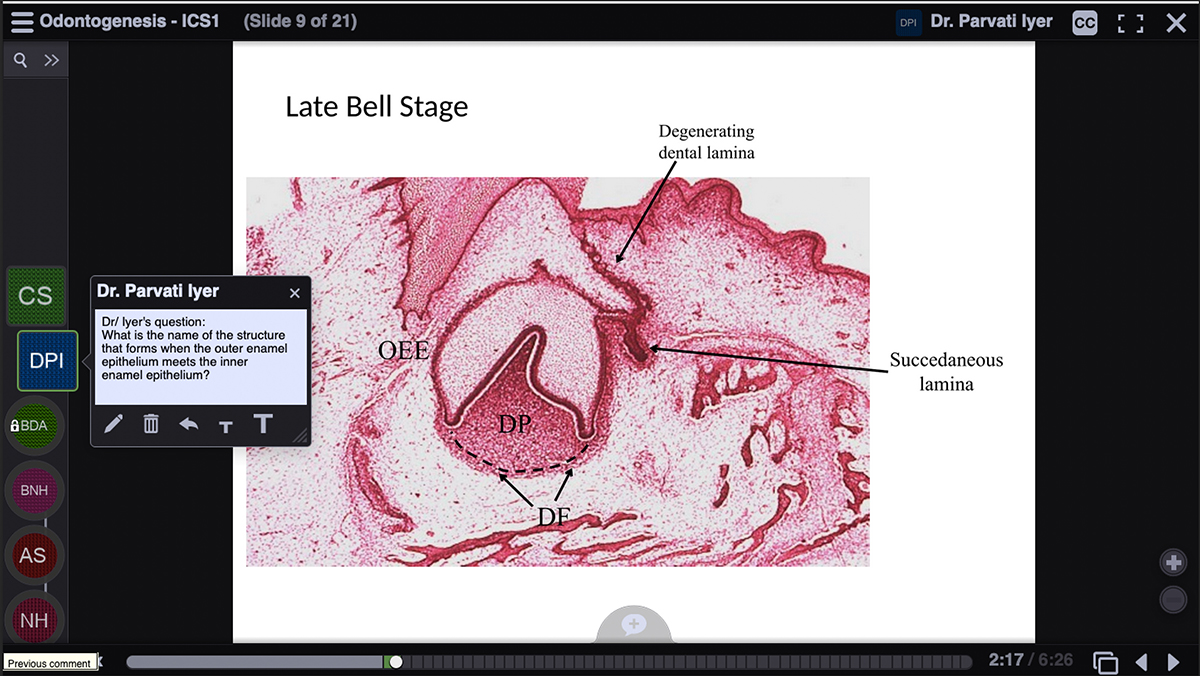
“I’ve always been interested in exploring how to use technology to ensure students comprehend what I’m teaching,” says Dr. Parvati Iyer. She has found tools that engage students in class such as VoiceThread, which converts lectures into peer learning experiences with guided questions, and Poll Everywhere, which she uses to conduct pop quizzes.
The competition feature of Poll Everywhere and other apps “gamifies” learning, making it more fun for the students, while the immediacy also has a useful pedagogical function. “If I find out that, for example, 73% of students missed a certain question, then that’s on me. I ask questions to find out what they didn’t understand, I give additional instruction and then we move on,” says Iyer. “Finding out these learning gaps with a click is one of the things I love.”
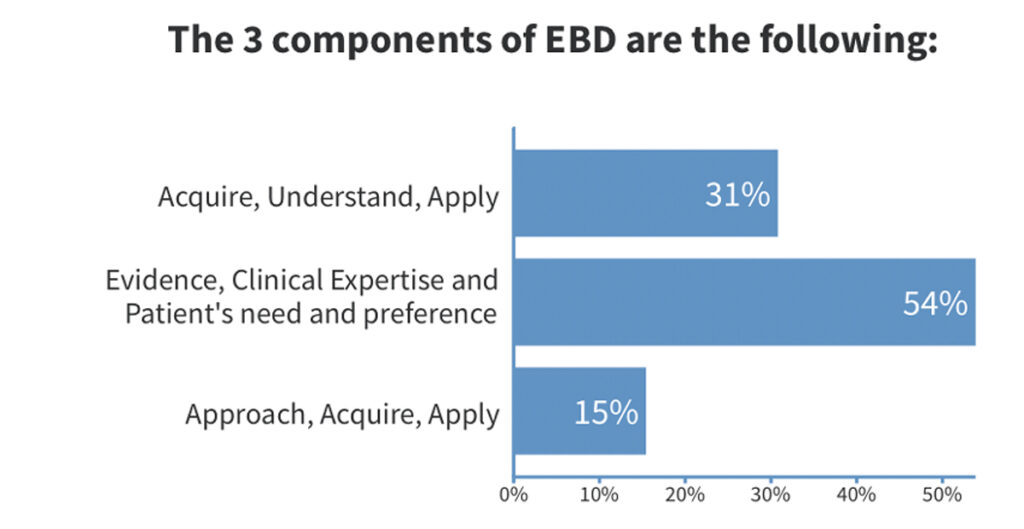
Iyer has several ideas for new ways of using technology in teaching. For example, she would like to replicate work she saw from a colleague at another dental school who is using virtual reality to help students practice clinical communication with patients. She would also like to have students create an app that would help with diagnosis and treatment planning by presenting users with different modalities available for specific diseases and conditions. “I’d like to have the students look up information that has been vetted and for them to feel ownership,” she says.
Iyer knows that her technology ideas can become real projects at the dental school. “Here at Pacific we enjoy the utmost freedom to innovate. We have support from administration to experiment, and that gives us the courage to make mistakes,” Iyer reflects. “It is an amazing opportunity.”
Orthodontic Partnerships: 3D Printing and AI
Dr. Joorok Park ’08 Ortho
Assistant Professor, Department of Orthodontics; Director of the Orthodontic Clinic
Photos by Jon Draper
From 3D printers that make customized orthodontic brackets to facial sensors that can track patient jaw motion, the Dugoni School of Dentistry’s Department of Orthodontics has a wealth of cutting-edge products, says Dr. Joorok Park ’08 Ortho, thanks to administration’s commitment to technology and to the school’s industry partnerships.
“We have been very fortunate that we are near the heart of Silicon Valley,” says Park. Partnerships include one with LightForce, the company doing 3D-printed brackets, with Anatomage, a premier 3D imaging software company, and the longtime work with Align Technology, maker of Invisalign® clear aligners.
Park says that the school’s industry partnerships are a “win-win” for the dental school and for the companies. “We get lots of software and other products; faculty and students have the opportunity to conduct research and development work; and the feedback we give the companies helps them as they develop and improve new products.”
In addition to providing hands-on exposure to the latest technologies, Park gives an example of how the technologies are used to teach. “We use an intraoral scanner to create a digital smile, and the AI [artificial intelligence] simulates the movement or restoration of the teeth in a proposed treatment, so students can practice how to treatment-plan a case digitally.”
Park notes that many of the technologies being used in orthodontics have uses in other disciplines as well. The AI-supported automatic landmark location software, for example, assists orthodontists in creating more detailed treatment plans but also provides more precise skull measurements that benefit oral maxillofacial surgeons during surgical treatment planning.
When asked if there is a downside to the increasing technology in orthodontics, Park replied, “There is a lot more for students and residents to learn, but ultimately this will be the future of dentistry!”
Digital Dentistry
Photos by Jon Draper
Dr. Bina Surti
Associate Professor, Department of Preventive and Restorative Dentistry; Digital Dentistry and CAD/CAM Content Coordinator
“As dental educators, we need to make certain our graduates are not only competent in the fundamentals of dentistry but also comfortable with the new technology they will see in their dental practices,” says Dr. Bina Surti. She helps make this happen at the dental school by seeking out technologies used in restorative dentistry, training faculty to teach this technology, integrating this technology into the curriculum and ensuring students have a chance to apply technologies in the clinic.
As part of this digital dentistry curriculum, students have learned to use technologies such as CAD/CAM and digital impression systems, along with dental photography, intraoral cameras and soft tissue lasers. Surti says, “We know the dental profession is rapidly evolving, and these digital technologies increase accuracy, streamline workflow and improve the overall patient experience.”
The digital tools were also useful in educating students in 2020 during the pandemic. When colleagues were creating at-home kits for students to use in practicing prep work, Surti and Dr. Priya Prasannakumar, assistant professor in the Department of Preventive and Restorative Dentistry, added an intraoral camera to the kits, and students were able to demonstrate their work and get feedback from faculty by connecting the camera over Zoom.
Surti and Prasannakumar presented this work at the American Dental Education Association annual conference, where Surti says the Dugoni School of Dentistry may be the only school using the intraoral cameras for educational feedback. Even beyond pandemic education, this is a great use of the technology, says Surti. “We now have a way to provide immediate feedback outside of regular school hours.”
She says that, while the majority of dental offices still use analog methods for restorative dentistry, the current generation of students will see dentistry move completely digital for procedures like impressions. “Digital dentistry isn’t the future anymore,” she tells students. “It’s the present.”
Experiential Learning
Dr. Jesse Manton ’14
Assistant Professor, Department of Oral and Maxillofacial Surgery
Dr. Jesse Manton ’14 is passionate about experiential learning and about effectively training dental professionals to recognize a patient requiring urgent or emergency care and to initiate evaluation and management. The most important preparation for dealing with an emergency, according to Manton is training in the most real-world ways possible.
In addition to overseeing a renovation of several oral surgery suites to become the new OMFS SurgiCenter, Manton has also created a medical simulation suite for delivery of foundational knowledge, skills and experiences in emergency medicine. In the MEDSim Suite, a robotic mannequin helps students learn appropriate assessment and management principles to care for unwell dental patients. “Clinical simulation is not just playing with dolls,” says Manton. “It is scientifically based on learning theories and on the application of didactic knowledge through experiential learning.”
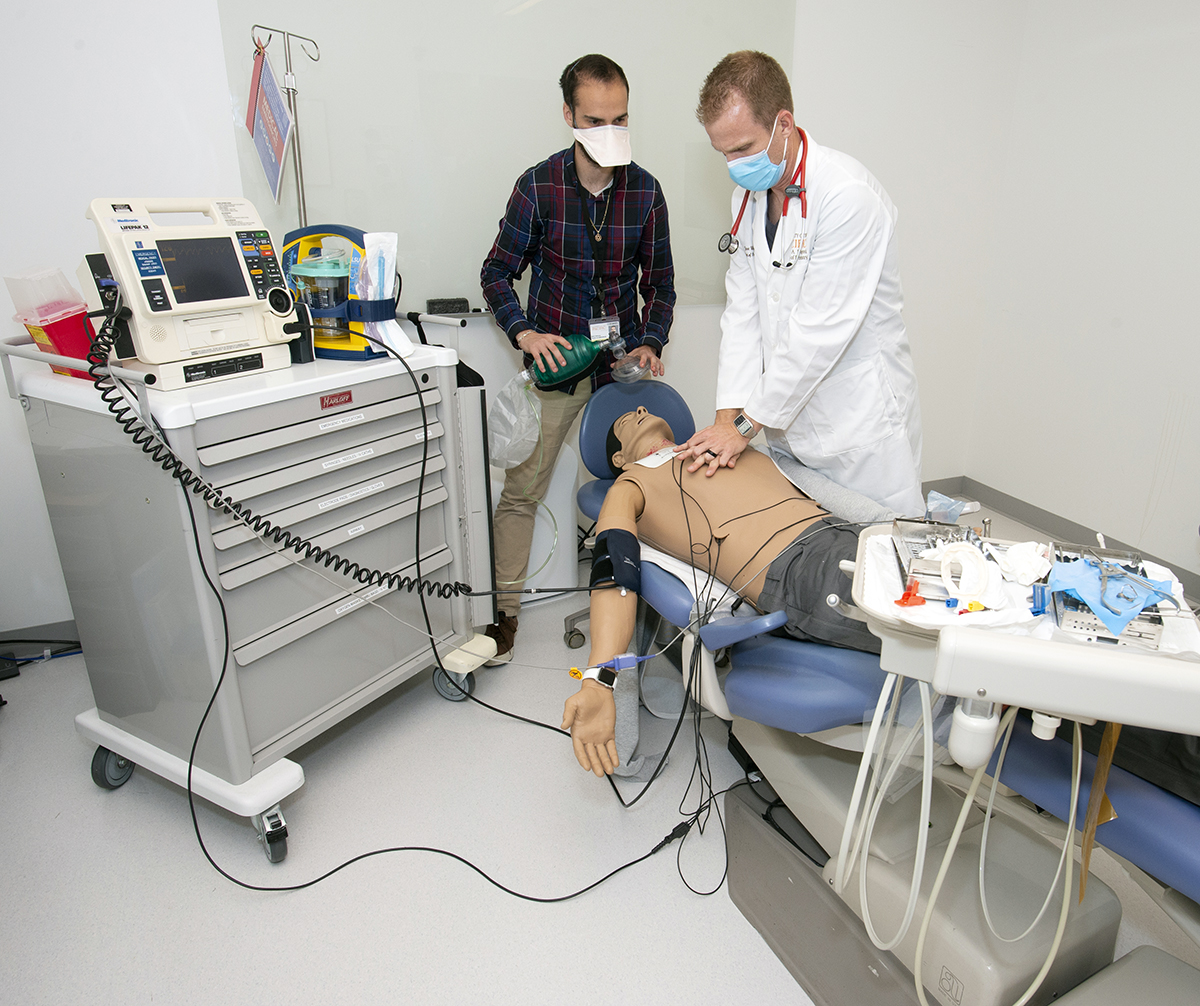
Photo by Jon Draper
Manton can control the mannequin’s vital signs and responses with a laptop from an adjacent room, as well as vocalized patient responses through a speaker mounted under the chair. The lab also includes cameras in the ceiling so that faculty—and other students in a lecture hall—can watch the teams respond to the changing and relevant scenarios.
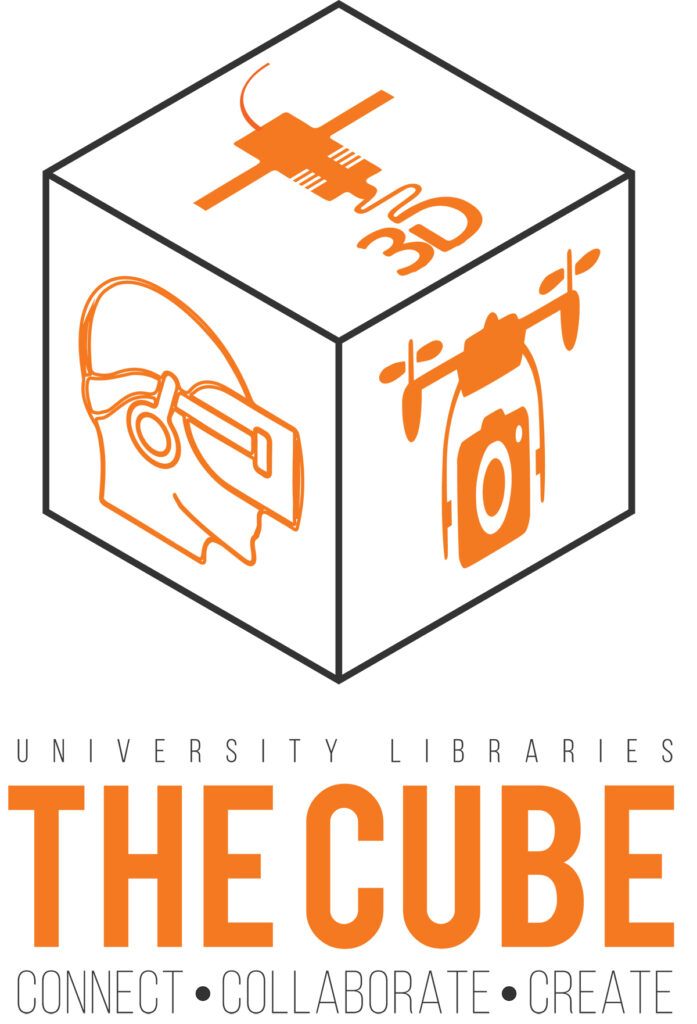
“Students are on fire with excitement about the things they are learning here,” says Manton. And he continues to expand ways for students to learn experientially.
“I’m working with The Cube [the innovative projects studio on Pacific’s Stockton campus] to bring to life a project I’ve dreamed of for years: migrating my scenarios and research content to a virtual platform with a team of gaming coders. We’re building out a virtual reality dental office, so students in the future will be able to practice their emergency medicine skills in a virtual environment.”
He says that using augmented reality goggles and virtual environments will bring to dentistry training tools already used in the military and in other fields of medical training. “We are fundamentally changing the way we train dentists to become proficient in emergency and perioperative medicine,” says Manton. “Dental education will never be the same.”
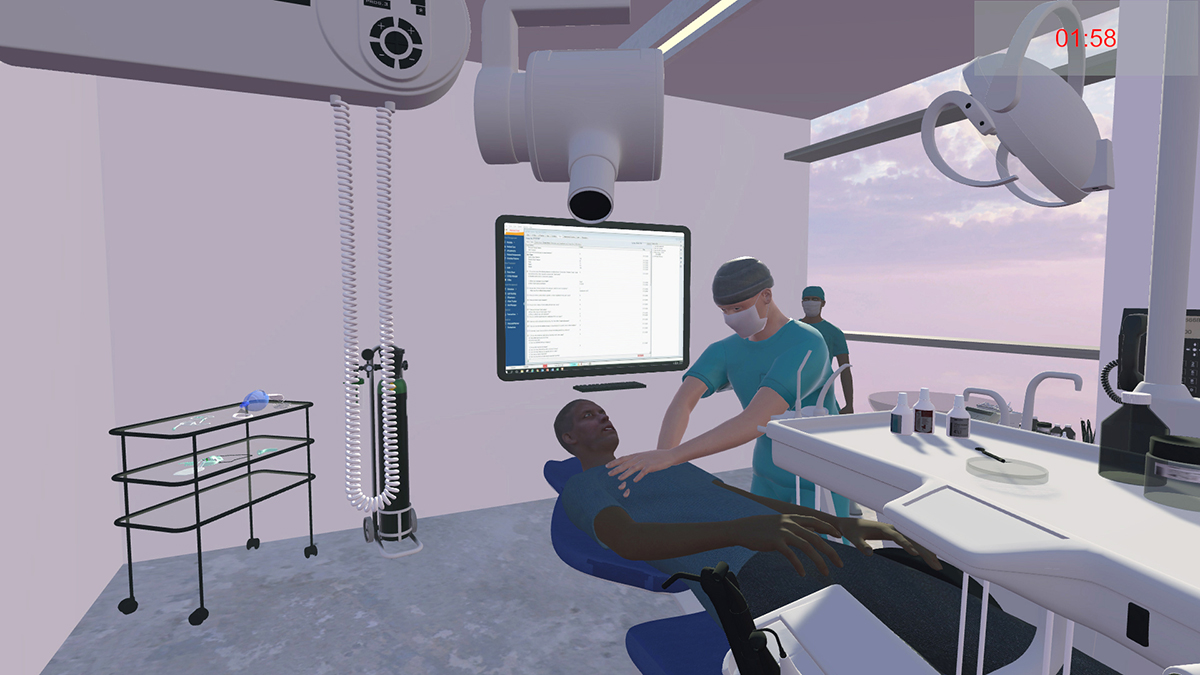
Jennifer Laugham is a contributor to Contact Point and other University of the Pacific publications.
